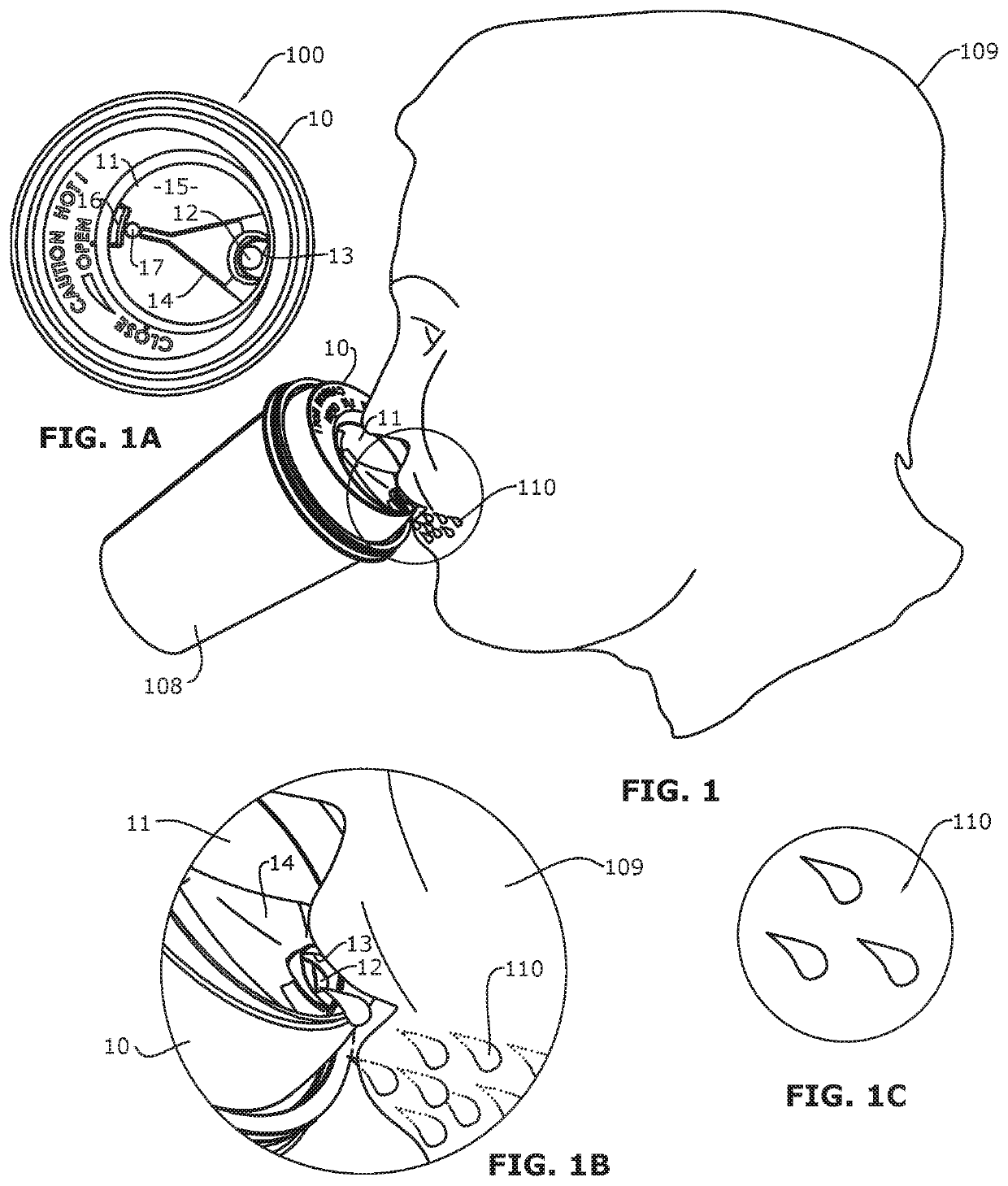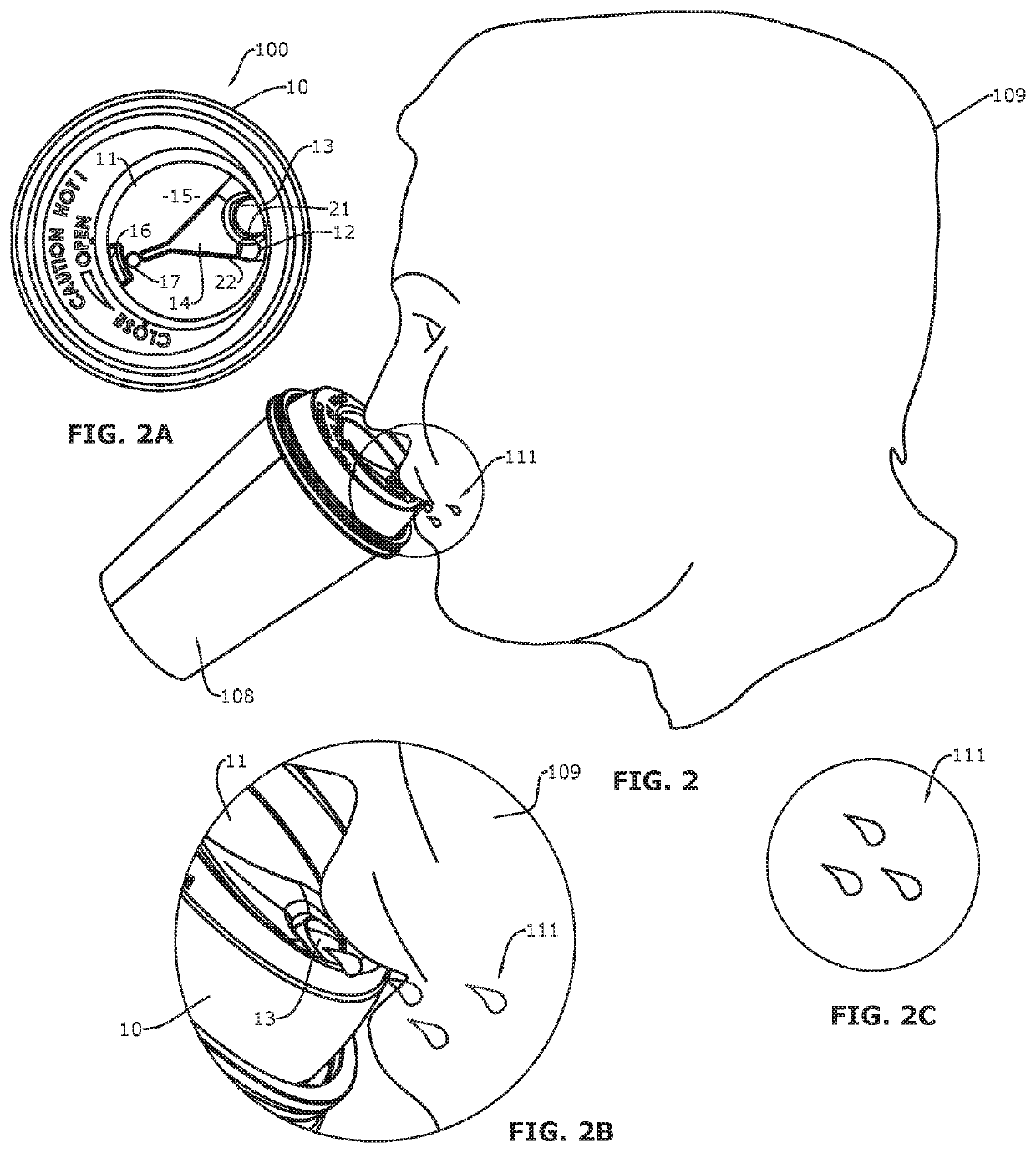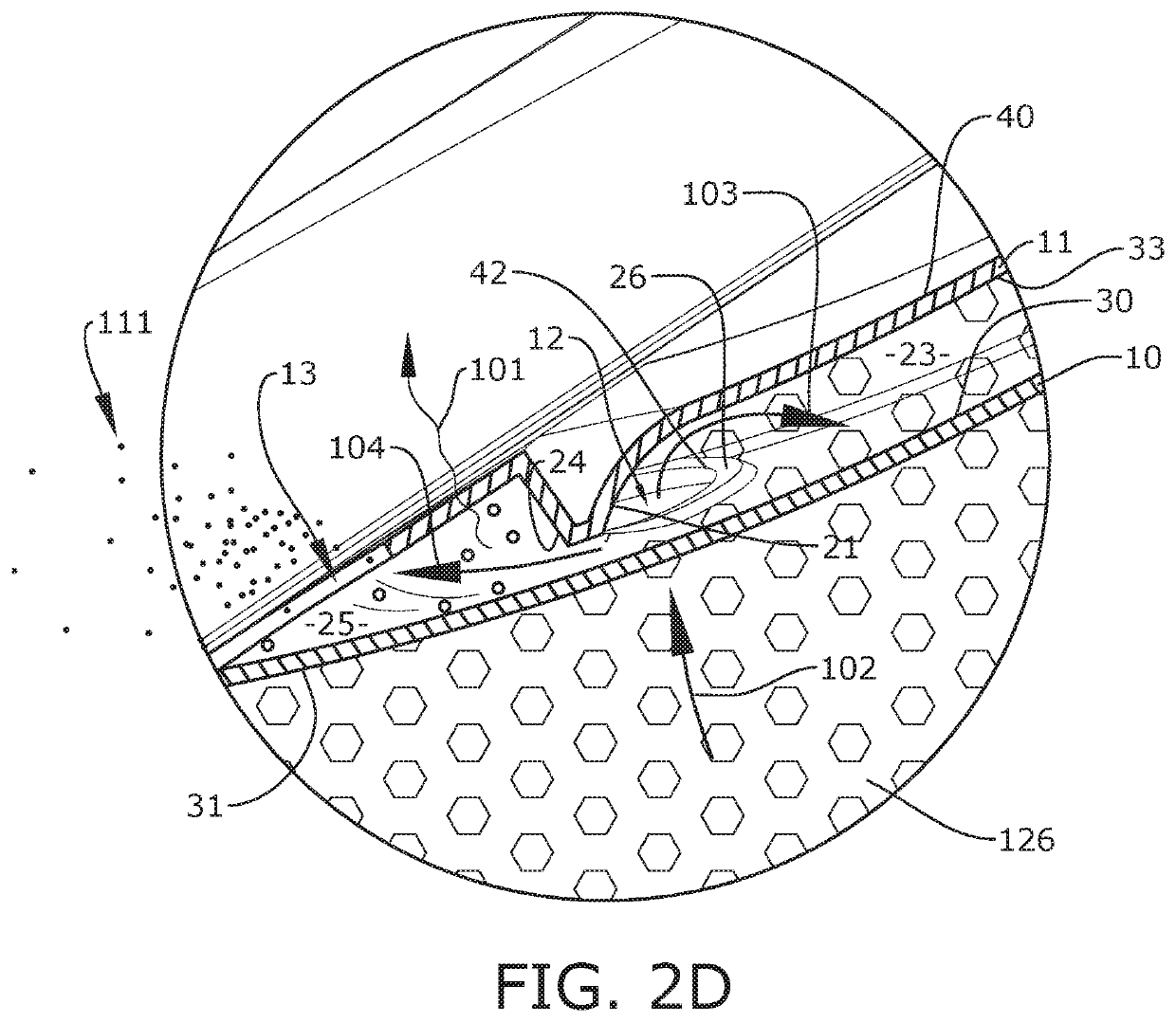Liquid container lid assembly for controlled liquid delivery
a liquid container and lid technology, applied in the direction of lids, packaging, removable lids/covers, etc., can solve the problems of limited knowledge of the means of cooling hot beverages prior to consumption by way of lid construction or assembly, and achieve the effects of enhancing heat transfer, enhancing liquid redirection, and enhancing liquid compartmentalization
- Summary
- Abstract
- Description
- Claims
- Application Information
AI Technical Summary
Benefits of technology
Problems solved by technology
Method used
Image
Examples
Embodiment Construction
[0111]Referring now to the drawings with more specificity, FIGS. 1-1C depict a series of images that attempt to depict a user 109 drinking from a liquid container 108 outfitted with a first alternative lid assembly with nested bowl or insert feature according to the present invention with the first alternative lid assembly 100 shown in a fully open position or configuration. The fully open position is perhaps best shown or depicted in FIG. 1A. Outletting liquid 110 is depicted in FIG. 1B. The liquid volume as at 110 being outlet is diagrammatically or schematically depicted in FIG. 1C with three relatively large drops (as compared to drop sizes shown in FIGS. 2C and 3C) in an attempt to denote a maximum flow rate of the beverage or liquid when a lower aperture 12 (i.e. a first liquid-letting aperture) formed in the lower lid construction 10 is in alignment with an upper aperture or primary liquid-letting outlet 13 formed in the upper lid construction 11.
[0112]The series of images pr...
PUM
 Login to View More
Login to View More Abstract
Description
Claims
Application Information
 Login to View More
Login to View More - R&D
- Intellectual Property
- Life Sciences
- Materials
- Tech Scout
- Unparalleled Data Quality
- Higher Quality Content
- 60% Fewer Hallucinations
Browse by: Latest US Patents, China's latest patents, Technical Efficacy Thesaurus, Application Domain, Technology Topic, Popular Technical Reports.
© 2025 PatSnap. All rights reserved.Legal|Privacy policy|Modern Slavery Act Transparency Statement|Sitemap|About US| Contact US: help@patsnap.com



